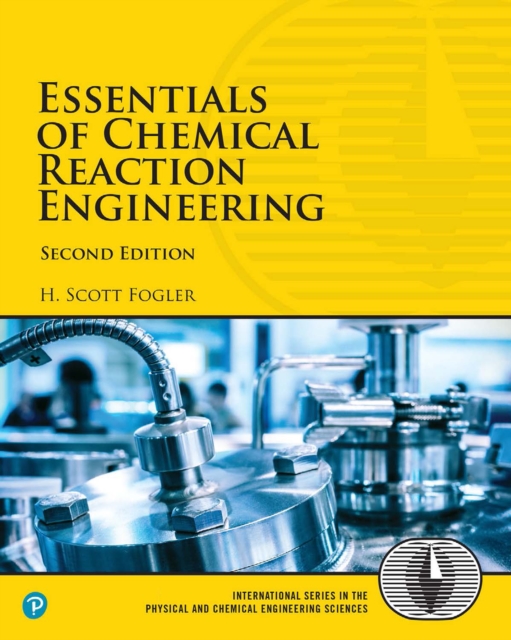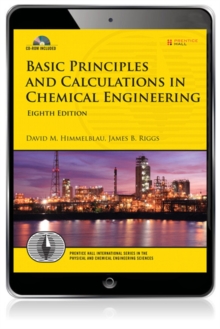
Essentials of Chemical Reaction Engineering PDF
by H. Scott Fogler
Part of the International Series in the Physical and Chemical Engineering Sciences series
Description
Today's Definitive, Undergraduate-Level Introduction to Chemical Reaction Engineering Problem-Solving
For 30 years, H. Scott Fogler's Elements of Chemical Reaction Engineering has been the #1 selling text for courses in chemical reaction engineering worldwide. Now, in Essentials of Chemical Reaction Engineering, Second Edition, Fogler has distilled this classic into a modern, introductory-level guide specifically for undergraduates. This is the ideal resource for today's students: learners who demand instantaneous access to information and want to enjoy learning as they deepen their critical thinking and creative problem-solving skills. Fogler successfully integrates text, visuals, and computer simulations, and links theory to practice through many relevant examples.
This updated second edition covers mole balances, conversion and reactor sizing, rate laws and stoichiometry, isothermal reactor design, rate data collection/analysis, multiple reactions, reaction mechanisms, pathways, bioreactions and bioreactors, catalysis, catalytic reactors, nonisothermal reactor designs, and more. Its multiple improvements include a new discussion of activation energy, molecular simulation, and stochastic modeling, and a significantly revamped chapter on heat effects in chemical reactors.
To promote the transfer of key skills to real-life settings, Fogler presents three styles of problems:
- Straightforward problems that reinforce the principles of chemical reaction engineering
- Living Example Problems (LEPs) that allow students to rapidly explore the issues and look for optimal solutions
- Open-ended problems that encourage students to use inquiry-based learning to practice creative problem-solving skills
About the Web Site (umich.edu/~elements/5e/index.html)
The companion Web site offers extensive enrichment opportunities and additional content, including
- Complete PowerPoint slides for lecture notes for chemical reaction engineering classes
- Links to additional software, including Polymath, MATLAB, Wolfram Mathematica, AspenTech, and COMSOL Multiphysics
- Interactive learning resources linked to each chapter, including Learning Objectives, Summary Notes, Web Modules, Interactive Computer Games, Computer Simulations and Experiments, Solved Problems, FAQs, and links to LearnChemE
- Living Example Problems that provide more than 75 interactive simulations, allowing students to explore the examples and ask "what-if " questions
- Professional Reference Shelf, containing advanced content on reactors, weighted least squares, experimental planning, laboratory reactors, pharmacokinetics, wire gauze reactors, trickle bed reactors, fluidized bed reactors, CVD boat reactors, detailed explanations of key derivations, and more
- Problem-solving strategies and insights on creative and critical thinking
Register your product at informit.com/register for convenient access to downloads, updates, and/or corrections as they become available.
Information
-
Download - Immediately Available
- Format:PDF
- Pages:816 pages
- Publisher:Pearson Education
- Publication Date:18/10/2017
- Category:
- ISBN:9780134664514
Other Formats
- EPUB from £66.03
Information
-
Download - Immediately Available
- Format:PDF
- Pages:816 pages
- Publisher:Pearson Education
- Publication Date:18/10/2017
- Category:
- ISBN:9780134664514










